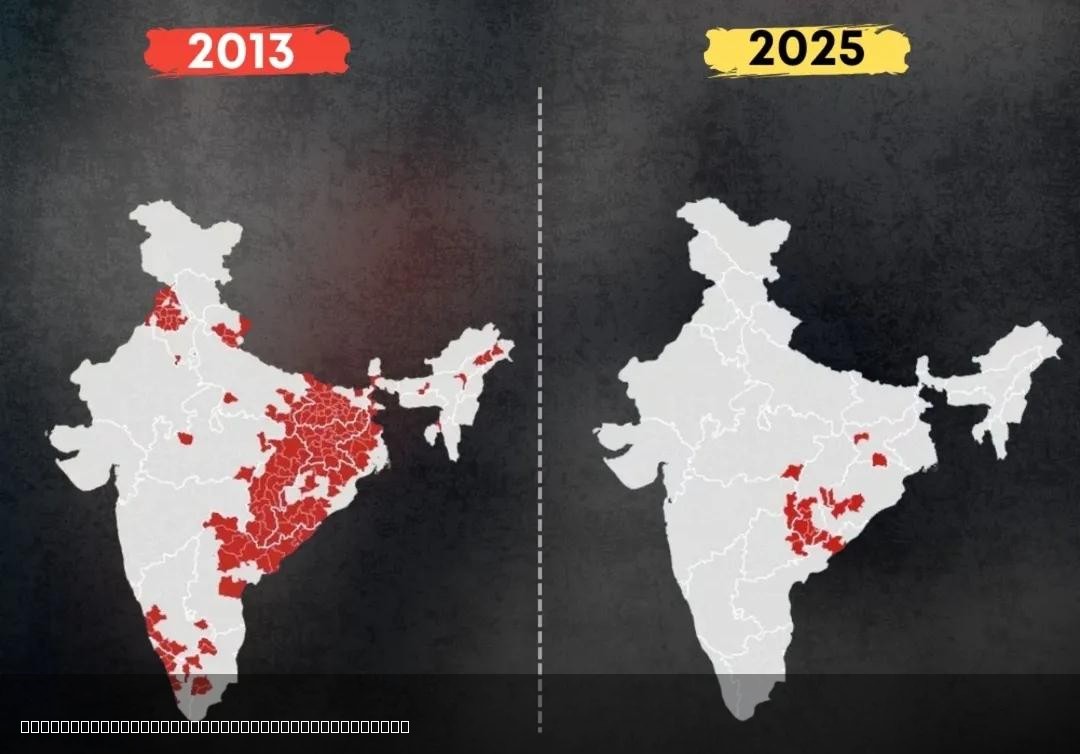Decline of Left Wing Extremism in India Map


Alex Cartwright
Senior Cartographer & GIS Specialist
Alex Cartwright is a renowned cartographer and geographic information systems specialist with over 15 years of experience in spatial analysis and data...
Geographic Analysis
What This Map Shows
The "Decline of Left Wing Extremism in India Map" visually represents the reduction of left-wing extremist activities across various states in India over recent years. This map highlights areas that have historically been hotspots for Maoist insurgency and shows how the intensity and frequency of such activities have diminished. By analyzing these changes, we can gain insights into the socio-political landscape of India and the effectiveness of government strategies aimed at countering extremism.
Deep Dive into Left Wing Extremism in India
Left-wing extremism, primarily associated with Maoist movements, has been a significant challenge for India since the late 1960s. The roots of this extremism can be traced back to socio-economic disparities, land rights issues, and the marginalization of tribal communities. The insurgents advocate for the rights of the underprivileged and often resort to violence to achieve their objectives, creating a cycle of conflict.
Interestingly, the decline noted in the map is not merely a statistical phenomenon. Over the past decade, the Indian government has implemented a multifaceted approach to combat left-wing extremism. This includes enhanced security operations, development initiatives aimed at improving infrastructure in affected regions, and efforts to engage with local communities. The government’s strategy has involved not just military action but also addressing the root causes of discontent, which is crucial in reducing the appeal of extremist ideologies.
Statistically, reports indicate that in the early 2000s, over 200 districts were affected by Maoist insurgency, but by 2020, this number had dropped significantly, with many areas seeing a marked reduction in violence. This decline is particularly evident in states like Chhattisgarh, Jharkhand, and Odisha, which have been historically associated with high levels of left-wing violence. The map showcases these changes, allowing us to visualize the shifting landscape of conflict and stability in India.
Regional Analysis
When examining the map, we can identify distinct regional trends in the decline of left-wing extremism. For instance, Chhattisgarh has been one of the hardest-hit states, with a significant portion of its forested areas being battlegrounds for Maoist groups. However, recent years have seen a substantial decrease in violence, attributed to both increased military operations and government-led development projects aimed at uplifting the local population.
In Jharkhand, another state where left-wing extremism was once rampant, the decline has been supported by community engagement initiatives. Programs aimed at educating locals about their rights and providing better access to resources have played a pivotal role in curbing the influence of extremist groups.
Conversely, certain regions still experience sporadic violence, indicating that while the overall trend is declining, challenges remain. For instance, pockets in Odisha, particularly in the southern districts, still report occasional incidents, suggesting that the battle against extremism is not yet over.
Significance and Impact
The significance of this decline in left-wing extremism cannot be overstated. It not only indicates improved security and stability in affected areas but also reflects the potential for economic development and social progress in regions that were once marred by violence. The implications for local populations are profound; with decreased violence comes the opportunity for education, healthcare, and infrastructure development – essential components for a better quality of life.
Looking forward, maintaining this positive trend will require continued investment in community development and ongoing dialogue with local leaders. As the government adapts its strategies based on the evolving landscape, understanding the geographic nuances of left-wing extremism will be vital. Ever wondered how geography plays a role in social movements? The map of left-wing extremism in India offers a compelling case study, illustrating how socio-economic factors and regional dynamics intertwine to shape the narrative of conflict and peace.
In conclusion, the decline of left-wing extremism in India is a testament to the resilience of communities and the effectiveness of targeted interventions. As we observe these changes on the map, it prompts us to consider how geography intersects with social issues and the importance of addressing the underlying causes of extremism. The journey towards lasting peace and development is ongoing, but with the right strategies in place, the future looks promising for many of these affected regions.
Visualization Details
- Published
- August 2, 2025
- Views
- 130
Comments
Loading comments...